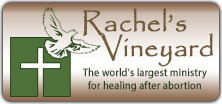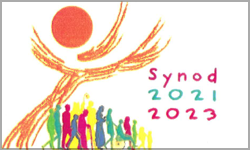By Jim Graves
Our Sunday Visitor
The National Shrine of St. Katharine Drexel in Bensalem, Pennsylvania, which houses the remains and relics of the saint who founded the Sisters of the Blessed Sacrament in 1891, will permanently close on Dec. 31, Sister Donna Breslin, president of the community, announced recently.
The shrine is located at the community’s motherhouse on a 44-acre site just outside of Philadelphia; the community also announced that it would sell a 2,200-acre property in Virginia, which was once the site of two schools for black students.
While it’s a sad announcement for local Catholics who have long admired Mother Drexel and her nuns, the remaining months of the year offer pilgrims a final opportunity to visit and enjoy the site St. Katharine once called home.
CATHOLIC CALENDAR EDITOR'S NOTE: Saint Katharine Drexel, the only canonized saint to visit Lake Charles, provided funding for the operation of Sacred Heart of Jesus Catholic School and her Sisters of the Blessed Sacrament religious were teachers and administrators there for many years. Her enormous contribution to the education of African-Americans and Native Americans in this country was immeasurable and occurred at a time when very few were taking the initiative.
Father Stephen Katziner, parochial vicar at Bensalem’s St. Ephrem Church, said that it was a “shock” to learn that the sisters were leaving. “They’ve given such a wonderful example to our community,” he said.
Father Katziner added that St. Ephrem’s priests have been frequently called upon to provide Mass and the sacraments to the large number of elderly sisters who had been living at the motherhouse, and many parishioners have served as volunteers at the shrine. The parish also had frequently used the motherhouse facilities for marriage preparation and confirmation retreat days.
“They’re really beloved in the community,” Father Katziner said. “It’s a great loss that they’re moving.”
In a statement, Sister Donna explained that chief among the reasons for the sale of the properties is the sisters’ lack of vocations; the community once had more than 600 sisters, whereas today there are around 100, the majority of whom are retired. The motherhouse site has 10 buildings, five of which are not in use.
Most of the sisters have left the facility, but a few have remained to keep the shrine open to visitors through the end of the year. The dual components of the shrine include a chapel, once used solely by the community, and a crypt underneath where Mother Drexel’s remains are interred.
Sister Pat Downs, director of the shrine, said, “The shrine is a peaceful, quiet place that welcomes people from all over the world.”
Sister Pat is from Troy, New York, and joined the sisters in 1955, just six months after Mother Drexel’s death. Although she never had the opportunity to meet her foundress, she said, through her work with the community and at the shrine “I have come to love and appreciate her.”
Mother Drexel oversaw the building of the motherhouse in 1891, as the Drexel family had a summer home nearby and was familiar with the area. It was farmland at the time, and offered a quiet, private place for young sisters to be trained and formed for their work in the missions.
Its chapel was built in memory of Elizabeth Drexel Smith, Mother Drexel’s sister, and opened in 1892. It has choir seating (with the sisters facing one another), a sanctuary lamp and tabernacle door donated by Louise Drexel Morrell, another sister of Mother Drexel, and a banner that was hung at the Vatican during Mother Drexel’s canonization in 2000. “It’s a lovely chapel,” Father Katziner said.
After Mother Drexel’s canonization, it opened to the general public daily, from 10 a.m. to 5 p.m., excluding major holidays, with Masses celebrated at 9:30 a.m. on Sundays and intermittently by priests visiting with groups. But many in the community come daily just for private prayer before the Blessed Sacrament. This is in keeping with Mother Drexel’s wishes, Sister Pat noted, as “her greatest desire was to lead people to Jesus.”
The crypt and museum is below the chapel and contains Mother Drexel’s remains and tells the story of Mother Drexel and her sisters. Visitors can also see many personal items she used, such as her habit and crucifix, shoes, the wheelchair she used later in life, a ring she wore for her religious profession, Indian artifacts given to her by Navajo friends and the pencil stubs with which she wrote, a reflection of her vow of poverty. Other features include a seven-minute introductory video and an Apache Burden Basket in which visitors can place prayer intentions.
The shrine has drawn about 5,000 visitors annually in recent years, with a sizeable increase in visitors during Pope Francis’ 2015 visit to Philadelphia. Volunteer Ruthie Joyce noted an increase in visitors has also occurred since the sisters announced the closing of the shrine last year.
People are drawn to the shrine, she said, because “it is a holy, spiritual, sacred space. When I drive onto the property, I can feel myself relax and be at peace.”
Daughter of Philadelphia
St. Katharine Drexel (1858-1955) was the second American-born saint to be canonized. She was born into a wealthy and pious Catholic family in Philadelphia, but instead of living a life of luxury, she opted to take vows of poverty, chastity and obedience. Soon after entering religious life, she founded the Sisters of the Blessed Sacrament for Indians and Colored People, which established schools and missions throughout the country. She was forced into retirement by a heart attack at age 77 in 1935, and died at age 96. The Bensalem motherhouse was her home throughout her religious life.
Ann deMarco has been an honor guard at Mother Drexel’s tomb for 25 years, greeting visitors and sharing stories about the saint’s life, and an associate with the community for 12, following their spirituality and charism. She stresses to visitors that although Mother Drexel inherited a fortune, “she never used the money for her own advantage. She was always looking to do God’s will. She’s a woman to be modeled.”
Mother Drexel never sought to start an order but wanted to give away her money and become a cloistered nun, deMarco said. Her spiritual director, though, convinced her to found her community instead. However, a series of heart attacks left Mother Drexel bedridden and unable to run the convent for the last 20 years of her life.
“Katharine had to wait until her mid-70s, but she finally got her heart’s desire, the cloistered life,” deMarco said. She added that the sale of the motherhouse was something the volunteers knew was coming due to the dwindling number of sisters and the expense of maintaining the property, but nevertheless, when the announcement came “we were totally shocked. We didn’t think the day would come.”
Once the shrine closes, Mother Drexel’s remains will be moved to Philadelphia’s Cathedral Basilica of Saints Peter and Paul. A buyer for the shrine buildings and properties has not yet been found.
Sister Pat encouraged visitors to take advantage of the final months the shrine will be open. “I think people will find it is a wonderful place to visit, and to celebrate and be grateful for Katharine’s life,” she said.
(Article was originally published in the OSV Newsweekly, www.osv.com, and is used here with permission.)

















